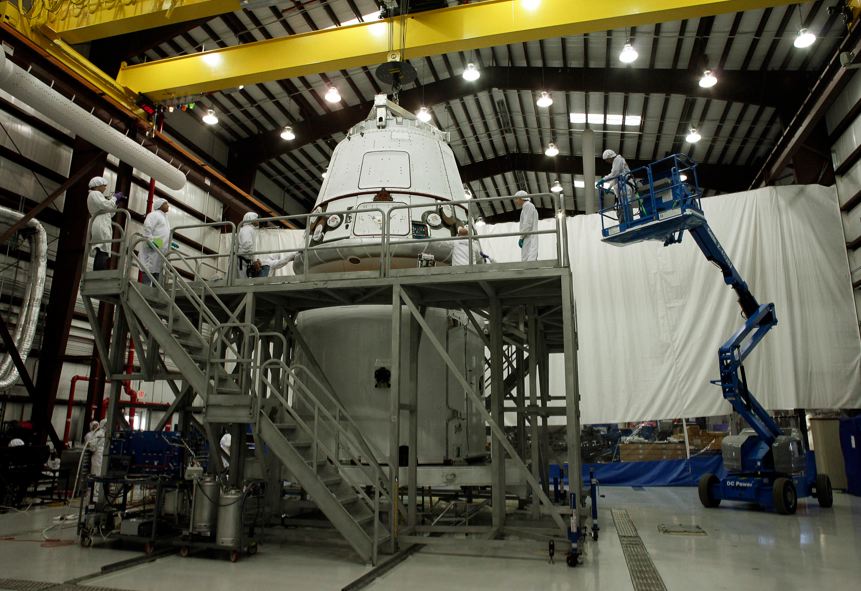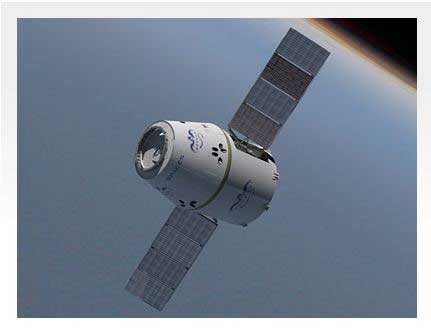
SpaceX/Photo courtesy Mike Brown
The SpaceX Dragon Capsule successfully mated to the trunk that will carry unpressurized cargo to the International Space Station. It was a significant milestone for SpaceX.
Dragon is a free-flying, reusable spacecraft being developed by SpaceX under NASA's Commercial Orbital Transportation Services (COTS) program. Initiated internally by SpaceX in 2005, the Dragon spacecraft is made up of a pressurized capsule and unpressurized trunk used for Earth to LEO transport of pressurized cargo, unpressurized cargo, and/or crew members.
The Dragon spacecraft is comprised of three main elements:
- The Nosecone, which protects the vessel and the docking adaptor during ascent
- The Spacecraft, which houses the crew and/or pressurized cargo as well as the service section containing avionics, the RCS system, parachutes, and other support infrastructure
- The Trunk, which provides for the stowage of unpressurized cargo and will support Dragon’s solar arrays and thermal radiators.

Dragon Spacecraft with Solar Panels deployed
Though designed to address cargo and crew requirements for the ISS, as a free-flying spacecraft Dragon also provides an excellent platform for in-space technology demonstrations and scientific instrument testing. SpaceX is currently manifesting fully commercial, non-ISS Dragon flights under the name “DragonLab”. DragonLab represents an emergent capability for in-space experimentation.

